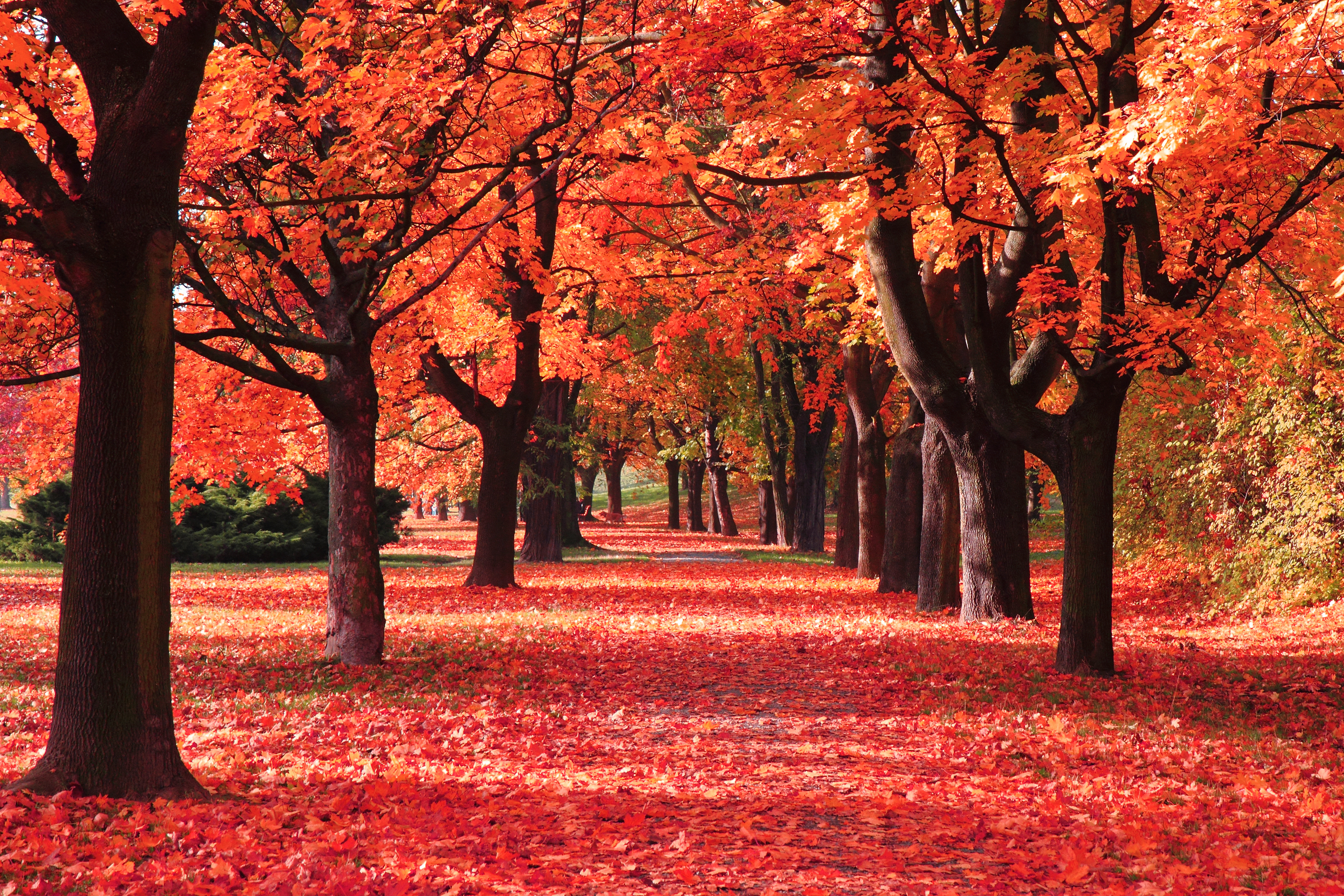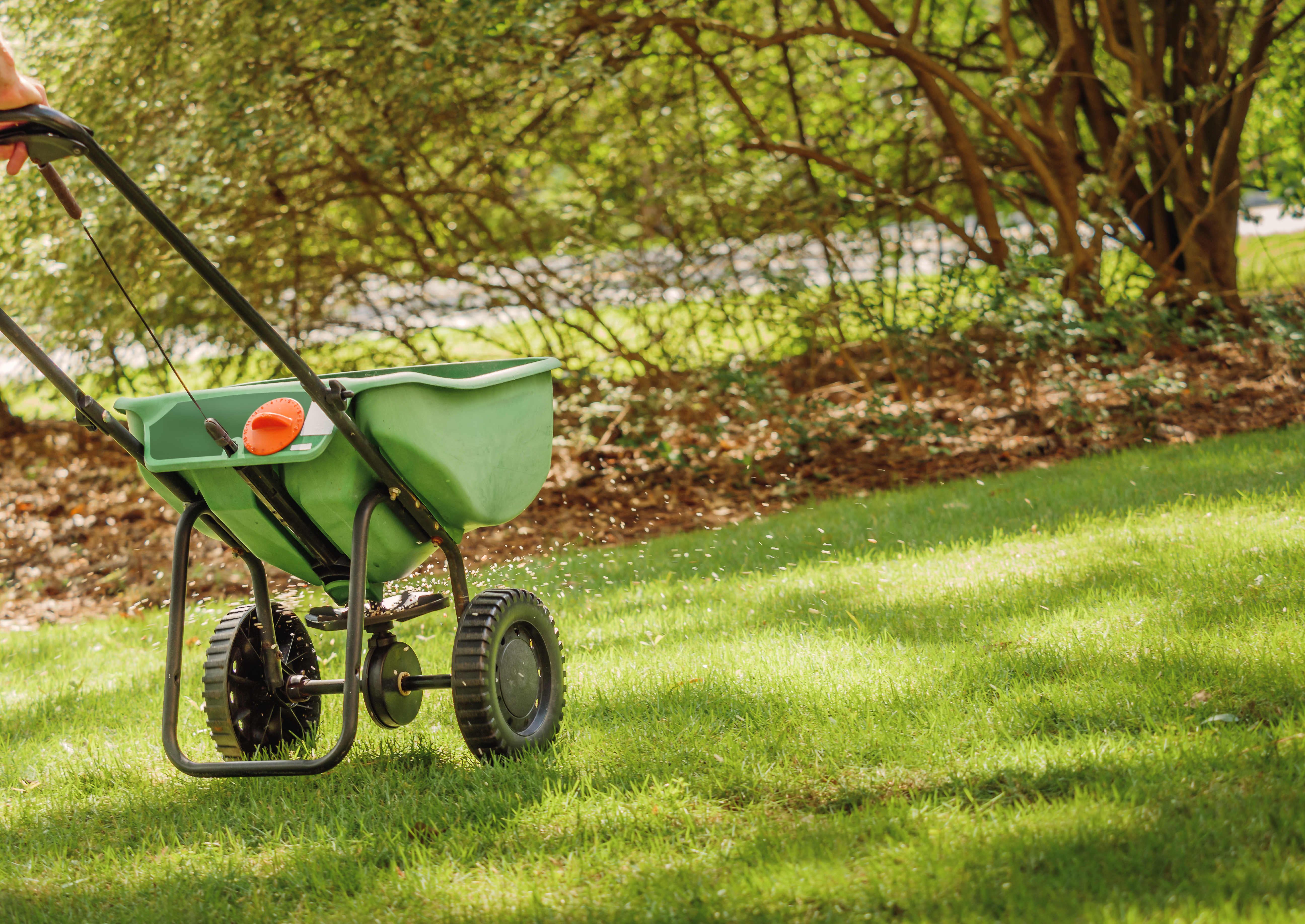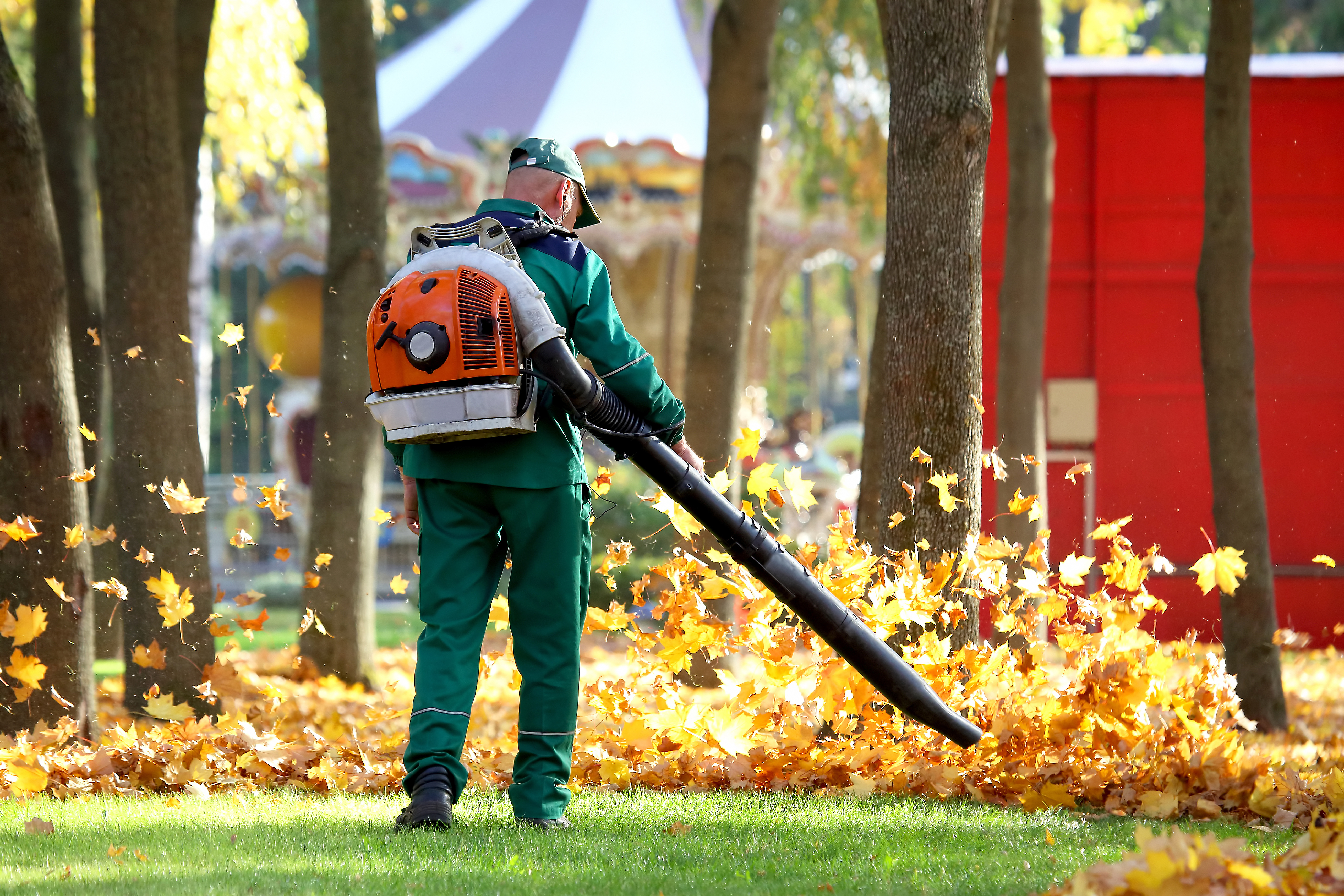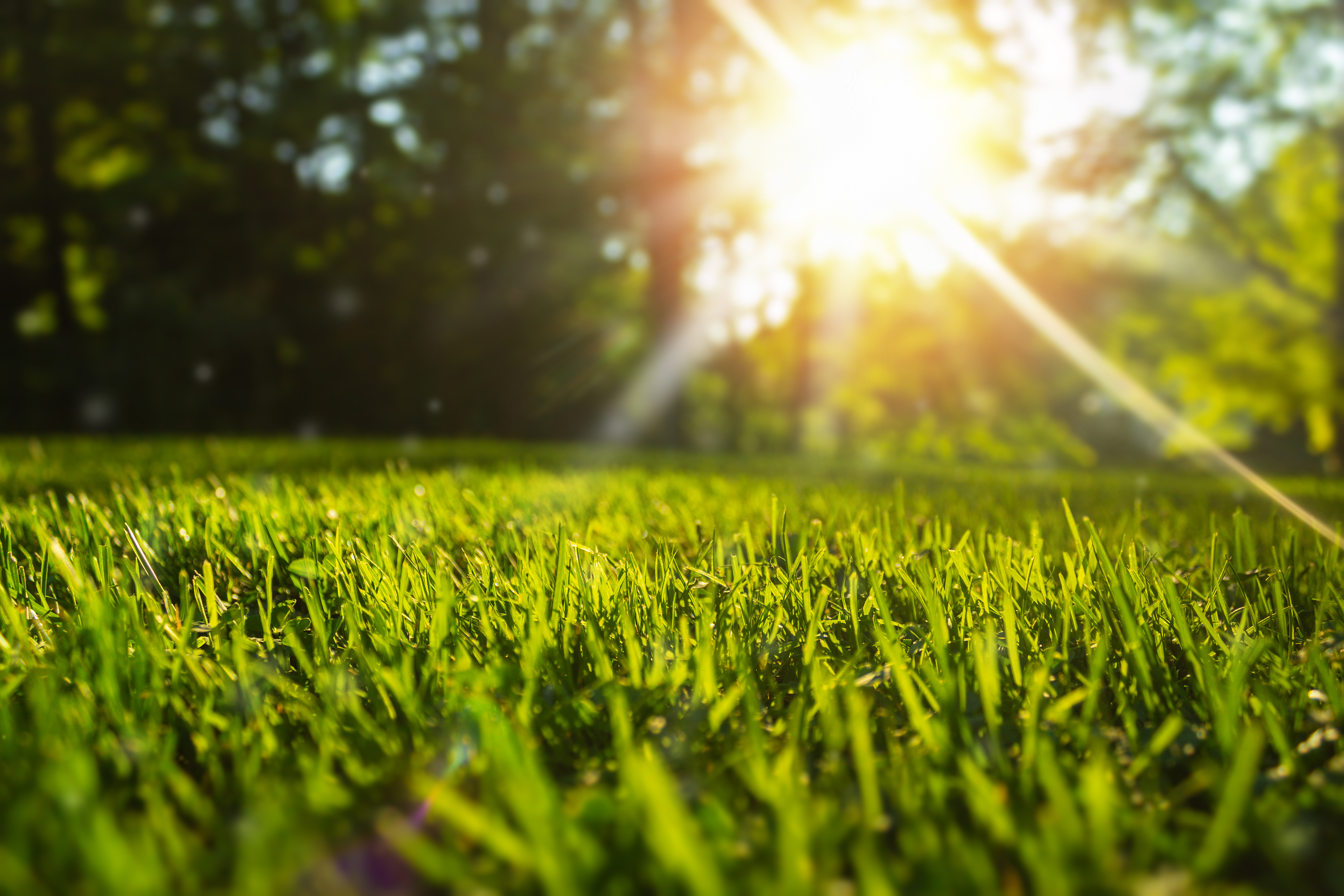Blog
How to Prep Your Lawn and Landscaping for Fall in Richmond, VA

October 7, 2025
Richmond, Virginia, is known for its vibrant seasons, each bringing its own beauty—and its own landscaping challenges. As summer heat fades into crisp autumn air, homeowners across Central Virginia begin thinking about preparing their lawns and gardens for the fall season.
Fall is more than just raking leaves and picking pumpkins—it’s actually the most important season of the year for lawn care. If you’ve recently seeded or sodded a new lawn, or if your landscaping is still becoming established, your fall maintenance plan is even more critical.
This guide will walk you through everything you need to know to set up your yard for success: the unique conditions of Richmond’s climate, the timing of tasks, and specific care tips for new lawns and freshly planted landscaping. By following these steps, you’ll ensure your grass and plants not only survive the coming winter but thrive next spring.

Why Fall Lawn Prep Is Essential in Richmond, VA
Richmond sits in the transition zone—a tricky region for lawns because we experience both hot summers and cold winters. This means we can grow both warm-season grasses (like Bermuda or Zoysia) and cool-season grasses (like Tall Fescue, which is most popular for Richmond homes).
- Cool-season grasses thrive in fall. With milder temperatures and more consistent rainfall, fall is their peak growing season. This is when they repair summer damage, grow deeper roots, and establish resilience for the winter.
- Warm-season grasses slow down. Bermuda or Zoysia will begin to go dormant as nights get cooler, so the focus shifts to preparing them for hibernation.
- Fall weeds love neglected lawns. Clover, chickweed, and henbit can take over if you don’t act early.
- New lawns are vulnerable. Freshly seeded or sodded grass needs extra care to root deeply before cold weather sets in.
For homeowners—especially those who just installed a new lawn—fall prep isn’t optional. It’s the season that sets the stage for lush, healthy growth in spring.
Step 1: Evaluate the Condition of Your Lawn
Before diving into aerating, overseeding, or fertilizing, take stock of what you’re working with.
- Is your lawn new? If you’ve just seeded this year or installed sod, your approach will differ from a mature lawn.
- Is your grass type cool-season or warm-season? Tall Fescue is most common for Richmond, but some neighborhoods and newer builds feature Bermuda.
- Do you see bare patches, compaction, or thin grass? Fall is the best time to correct these.
Taking a few minutes to diagnose the health of your lawn will help you choose the right treatments without stressing young grass.
Step 2: Aeration and Overseeding (Essential for Cool-Season Lawns)
In Richmond, September through mid-October is prime time for aerating and overseeding Tall Fescue lawns.
Why Aerate?
Summer heat and foot traffic cause soil compaction, which suffocates grassroots. Aeration opens the soil by pulling out plugs, allowing oxygen, water, and nutrients to penetrate deeper.

Why Overseed?
Fescue is a bunch-type grass that doesn’t spread like Bermuda or Zoysia. Overseeding introduces fresh seed to thicken your lawn, fill bare spots, and improve disease resistance.
Special Notes for New Lawns:
- Brand-new sod or seed (under 1 year old): Skip core aeration. Your young roots aren’t ready for the stress. Instead, lightly rake seed into thin spots and topdress with compost.
- Lawns seeded last fall: You can aerate carefully if roots are established.
Step 3: Fertilize for Strong Roots
Fall is the best season for fertilizing lawns in Richmond, especially cool-season grasses like Tall Fescue.
- Use a nitrogen-rich fertilizer in early fall (September). This boosts growth and recovery from summer stress.
- Follow up with a root-building fertilizer in late fall (November). A high-phosphorus or balanced fertilizer strengthens roots for winter survival.
For New Lawns:
- Always choose a starter fertilizer designed for young grass. It promotes root growth without overwhelming tender blades.
- Avoid “weed and feed” products on new lawns—herbicides can damage immature grass.
Step 4: Control Weeds Before They Take Over
Fall weeds like chickweed, henbit, and annual bluegrass germinate when temperatures drop. If you don’t stop them now, they’ll dominate your lawn by spring.
- Apply a pre-emergent herbicide in early September to block weed seeds.
- Spot-treat existing weeds with a post-emergent spray.
For New Lawns:
If your grass is less than 6–8 weeks old, skip pre-emergent herbicides. They’ll stop your grass seed from germinating too. Instead, mow regularly to keep weeds from going to seed, and hand-pull problem areas.
Step 5: Adjust Your Watering Schedule
Richmond’s fall weather is typically mild, with cooler nights and more rainfall. That means you can reduce your watering, but don’t turn the sprinklers off completely.
- For established lawns: About 1 inch of water per week is still ideal until the ground freezes.
- For new lawns: Keep soil consistently moist. Shallow, frequent watering is better for seedlings, but gradually shift to deeper, less frequent watering as roots strengthen.
Tip: A rain gauge or a tuna can on the lawn helps measure weekly rainfall so you don’t over- or underwater.
Step 6: Mowing Tips for Fall
As temperatures cool, growth slows—but mowing is still important.
- Set mower height to 2.5–3 inches for Tall Fescue. This height protects roots while allowing enough blade surface for photosynthesis.
- Don’t scalp warm-season grasses. Leave Bermuda or Zoysia around 1.5–2 inches until dormancy.
- Keep blades sharp. Dull blades tear grass, making it more vulnerable to disease.
For New Lawns:
- Wait to mow until seedlings reach 3–4 inches tall.
- Cut no more than 1/3 of the blade at a time.
- Be gentle—new roots are still fragile.

Step 7: Leaf Management
Richmond’s tree-lined neighborhoods bring beauty in autumn—but also heavy leaf fall. Leaving thick layers of leaves on your lawn blocks sunlight, traps moisture, and invites pests.
- Mulch leaves with your mower. Small clippings decompose and add nutrients.
- Rake or blow large piles weekly. Don’t wait until the end of the season.
For New Lawns:
Be extra cautious. Heavy raking can pull up tender seedlings. Instead, use a leaf blower on low power or gently rake with a lightweight tool.
Step 8: Care for Landscaping and Garden Beds
- Plant new shrubs and trees in fall. Cooler soil temps and autumn rains help roots establish before summer heat returns.
- Cut back perennials after the first frost. This prevents disease and prepares beds for spring regrowth.
- Mulch garden beds. A 2–3 inch layer regulates soil temperature and conserves moisture through winter.
For New Plantings:
- Water consistently until the first frost. Young trees and shrubs need steady moisture to establish roots.
- Skip heavy pruning—wait until late winter or early spring to shape.
- Consider using stakes for young trees to protect them from strong fall winds.
Step 9: Address Common Richmond Lawn Challenges in Fall
Every region has unique lawn issues. In Richmond, here’s what to watch for:
- Clay-heavy soil. Many neighborhoods sit on dense clay, which holds water but compacts easily. Aeration and compost topdressing are essential.
- Brown patch disease. Humid late summers often cause fungal infections in Tall Fescue. Fall overseeding helps repair damage.
- Acidic soil. Richmond soils often lean acidic. Fall is a good time to test your soil and add lime if needed.
Step 10: Prepare for Winter
Once late November rolls around, your main goal shifts from growth to protection.
- Final mow before winter: Cut slightly shorter (about 2.5 inches) to reduce snow mold risk.
- Clean up yard debris: Fallen branches, piles of leaves, and garden waste invite pests.
- Drain irrigation systems: Prevent frozen pipes and damage to sprinklers.
A Month-by-Month Fall Lawn & Landscaping Checklist for Richmond, VA
Here’s a quick timeline to keep you on track:>
September
- Aerate and overseed (cool-season lawns).
- Apply starter fertilizer to new lawns.
- Begin pre-emergent weed control (skip if seeding).
- Adjust watering schedule for cooler temps.
October
- Continue mowing and watering as needed.
- Reseed thin patches.
- Mulch garden beds.
- Rake and mulch leaves regularly.
November
- Apply late-fall fertilizer for root growth.
- Cut back perennials after frost.
- Perform final mowing before dormancy.
- Clean up debris and prepare irrigation for winter.
Key Differences Between New and Established Lawns
To summarize, here’s how your approach changes if your lawn is still young:
| Task | Established Lawn | New Lawn (Under 1 Year Old) |
| Aeration | Essential each fall | Skip—too harsh on new roots |
| Overseeding | Standard practice | Light overseeding only |
| Fertilizer | Full-strength fall program | Starter fertilizer only |
| Weed Control | Pre- and post-emergent safe | Avoid herbicides—mow & hand-pull |
| Leaf Removal | Mulch or rake freely | Use gentle tools to avoid damage |
| Watering | 1 inch/week | Shallow, frequent watering until roots deepen |

Final Thoughts: Set Your Lawn Up for a Healthy Spring
Prepping your lawn and landscaping for fall in Richmond, VA, is more than seasonal upkeep—it’s an investment in your home’s curb appeal and long-term value. For established lawns, fall care helps repair summer damage and build strength for winter. For new lawns, it’s a critical growth period that determines whether your investment thrives or struggles in the years ahead.
By taking the right steps—tailored to your grass type and lawn age—you’ll enjoy a lush, green yard that’s ready to impress when spring returns to Central Virginia.


